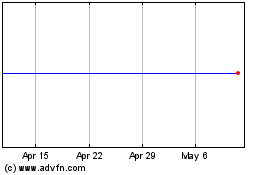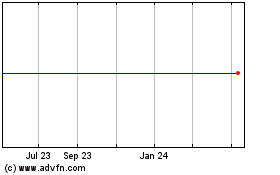UPDATE:BP To Replace Blow-Out Preventer On Ruptured Gulf Well
August 19 2010 - 1:52PM
Dow Jones News
BP PLC (BP, BP.LN) will attempt to replace a damaged blow-out
preventer before it permanently kills its ruptured deepwater Gulf
of Mexico well, the leader of the federal oil spill response effort
said Thursday.
The attempt to fish the device out of 5,000 feet of water, and
replace it with a stronger equivalent, is likely to push back BP's
attempt to inject cement from the bottom of the well to the week of
Sept. 6, after Labor Day, Ret. Coast Guard Adm. Thad Allen said.
The operation, known as "bottom kill," originally was expected to
take place mid-August, and according to U.S. authorities, it would
mark the official end of the Deepwater Horizon spill saga. Clean-up
operations and environmental studies are likely to continue for
months, however.
The delay, Allen said in a conference call with reporters, is
the result of a "couple of weather delays," and the unprecedented
nature of the relief effort. "Each time we take another step, we
learn more about the condition of the well," he said. The decision
to replace the blow-out preventer, taken Wednesday night, according
to Allen, comes amid concerns that flooding the well's annulus--as
the area between the well and the surrounding rock formation is
known--with liquid could compromise the cement plug that BP placed
on top of the well in early August. The well stopped leaking oil in
mid-July, when BP placed a sealing cap on top of it; the cap would
also be removed to allow the new blow-out preventer to be
installed.
The replacement of the blow-out preventer is subject to several
conditions, however. First, BP must determine that no oil or gas
will leak out if it removes the cap. To that end, it depressurized
the cap to allow seawater to flood in, simulating natural
conditions. The test will last 48 hours, Allen said.
After that procedure concludes, BP must conduct a "fishing
experiment" to remove the drill pipe that goes into the well, which
if left in place could hamper the installation of a new blow-out
preventer, which is already on the way to the well site aboard a
Transocean Ltd. (RIG) drillship.
BP must also submit a plan to fish the blow-out preventer out of
the water, as well as a timeline for its replacement. The procedure
should preserve the "forensic and evidentiary value" of the
blow-out preventer, which will be needed for investigators to
establish the cause of the explosion on April 20 that killed 11
people and unleashed the worst offshore accidental oil spill in
history.
If all the efforts are successful, the completion of a relief
well through which drilling fluid and cement would be injected into
the damaged well could then take place, Allen said. The relief well
is currently 50 feet above the point where it is expected to
intersect the damaged well's annulus, Allen said.
-By Angel Gonzalez, Dow Jones Newswires; 713-547-9214;
angel.gonzalez@dowjones.com
Cooper Cameron (NYSE:CAM)
Historical Stock Chart
From Jun 2024 to Jul 2024

Cooper Cameron (NYSE:CAM)
Historical Stock Chart
From Jul 2023 to Jul 2024
